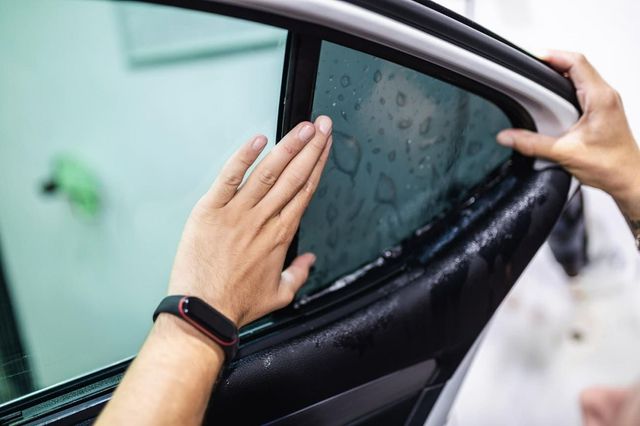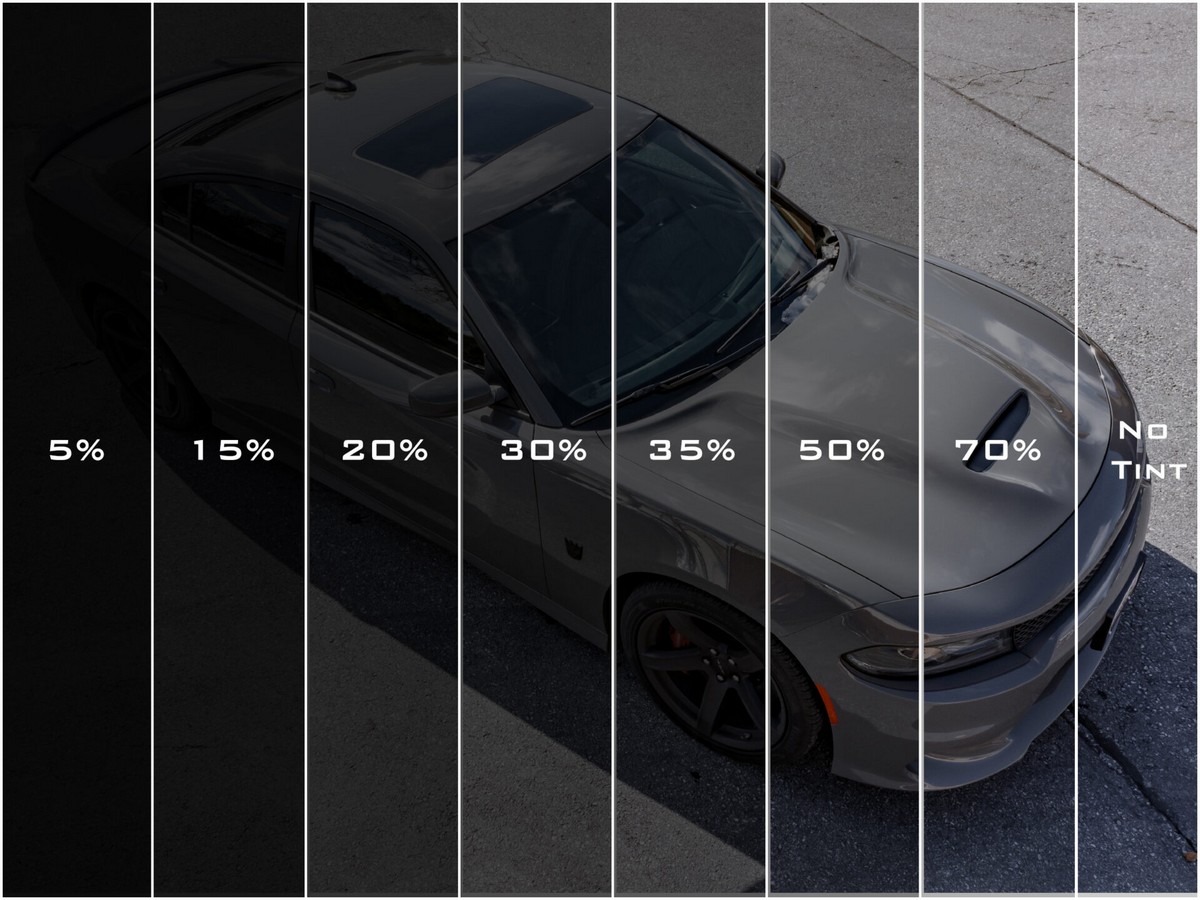Window Tinting Options: Find the Right Shade for Your Design and Needs
Picking the suitable window tint for your car includes a mindful consideration of different variables, including individual visual appeals, useful demands, and legal restrictions. With options ranging from light tintss that provide marginal personal privacy to darker tones that enhance seclusion, the options can be overwhelming. window tinting. Comprehending the effects of noticeable light transmission (VLT) percents and the benefits of various materials is critical in making an informed selection. As you consider your alternatives, you may ask yourself exactly how these aspects interaction to produce not just a look, yet a customized experience when traveling.
Recognizing Window Tinting Levels
When considering window tinting, it is necessary to comprehend the numerous levels of tint available, as they considerably influence both aesthetics and performance. Window tinting is classified based on Visible Light Transmission (VLT) percentages, which show the amount of light allowed to go through the glass. The VLT percentage can range from very light (over 70%) to extremely dark (listed below 5%)
The main levels of tint consist of clear, which offers UV security without modifying presence; light tint (over 50% VLT), which slightly reduces glare while maintaining exposure; tool tint (around 35% VLT), striking a balance in between personal privacy and light transmission; and dark tint (listed below 20% VLT), providing significant privacy and warmth reduction however limiting exterior presence.
Understanding these degrees is crucial as they can impact driving security, lawful compliance, and personal convenience. Furthermore, regional guidelines frequently dictate acceptable tint levels, varying by state or municipality. For that reason, prior to choosing a tint, it is advisable to study and make sure adherence to these regulations while thinking about individual preferences for design and functional advantages.
Popular Tint Tone Explained

One of one of the most popular alternatives is the classic dark tint, generally ranging from 20% to 5% VLT (Noticeable Light Transmission) This shade provides maximum privacy and a smooth, advanced appearance. It efficiently blocks UV rays and heat, making it perfect for bright climates, though it may restrict presence at night.
Alternatively, lighter tones such as 35% or 50% VLT supply a more subtle appearance while still providing some degree of personal privacy. These tones are perfect for those seeking a balance in between visual appeals and functionality, as they enable far better presence and follow various lawful standards.
An additional emerging choice is the ceramic tint, which can be available in a variety of tones - window tinting. It provides premium warmth rejection and UV protection without dramatically altering the lorry's appearance

Lawful Laws for Window Tinting
Comprehending the lawful guidelines surrounding window tinting is crucial for lorry proprietors looking to customize reference their autos. Each state in the united state has certain laws governing the darkness or lightness of window tintss, often determined by Visible Light Transmission (VLT) portion. VLT refers to the quantity of light that can travel through the glass and the movie incorporated.
In many states, laws determine different VLT portions for different windowss, including front windscreens, side windowss, and back windowss. For example, some states might permit a color of 70% VLT for windshields while permitting darker tintss for rear windowss. Furthermore, particular states have restrictions on reflective tintss, which can produce glow for other drivers.
Failure to adhere to these guidelines can cause fines, mandated elimination of the tint, and raised insurance premiums. Automobile proprietors should seek advice from neighborhood laws or state DMV internet sites to ensure they are within lawful restrictions before proceeding with installment. Recognizing these regulations not only helps stay clear of legal repercussions yet additionally makes certain a secure driving experience.
Benefits of Various Tint Products
Discovering the benefits of various tint products exposes significant benefits that can enhance both the functionality and visual appeal of an automobile. Each product offers distinct attributes fit to details needs and choices.
Dyeded window films are popular for their affordability and ability to minimize glow. Metalized films, on the various other hand, offer remarkable warmth decrease and UV protection due to their reflective residential properties.
Ceramic window films stand for a costs option, supplying outstanding heat being rejected while keeping visibility. They are non-metallic, hence avoiding any kind of signal disruption, and are extremely durable, resisting scrapes and fading with time. In addition, ceramic films do not have dyes, guaranteeing a longer-lasting appearance.
Lastly, crossbreed films combine components from dyeded and metalized options, providing a balanced efficiency in terms of heat being rejected, glow reduction, and price. Each tint product offers unique functions, enabling car proprietors to select the best suitable for their websites lifestyle and aesthetic choices, ultimately improving their driving experience.
Selecting the Right Tint for You
Discovering the right window tint involves taking into consideration numerous factors, including individual choices, car type, and regional guidelines. Initially, examine your individual style and desired degree of privacy, as these will certainly assist your selection of tint shade. Darker tintss give boosted privacy but might not be ideal for all drivers, specifically those that prefer a more open feeling inside their vehicle.
Following, consider your car kind, as the shapes and size of windowss can influence the efficiency of certain tintss. Larger windowss might profit from reflective tintss that lower glow while smaller sized windowss could be extra fit to dyeded films that provide subtle aesthetics.
In addition, it's critical to inspect local regulations concerning window tinting. Lots of states enforce restrictions on the allowable darkness and reflectivity, particularly for front windowss. Compliance with these regulations is necessary to stay clear of penalties and make sure safety and security.
Last but not least, examine the tint material that finest fits your requirements. Choices consist of dyeded, metalized, ceramic, and crossbreed films, each offering unique advantages connecting to warm rejection, UV security, and resilience. By thinking about these variables, you can with confidence select a home window tint that lines up with your design and useful requirements.
Final Thought
In final thought, picking the appropriate window tint requires careful consideration of numerous elements, including VLT percentages, regional guidelines, and the preferred aesthetic. Various tint products supply distinct advantages that can enhance lorry comfort and security. By thoroughly understanding the available choices and aligning them with individual Discover More choices and sensible requirements, one can accomplish an optimal equilibrium between design and functionality in window tinting options.
Choosing the ideal window tint for your lorry includes a cautious factor to consider of numerous aspects, including individual aesthetics, practical needs, and legal constraints. Each state in the U.S. has certain laws controling the darkness or lightness of window tintss, frequently gauged by Visible Light Transmission (VLT) percentage. Some states may enable a tint of 70% VLT for windscreens while allowing darker tintss for rear windowss.Discovering the right window tint entails thinking about numerous elements, including personal choices, automobile type, and local policies.In final thought, selecting the proper window tint calls for careful consideration of different elements, including VLT portions, neighborhood policies, and the preferred aesthetic.